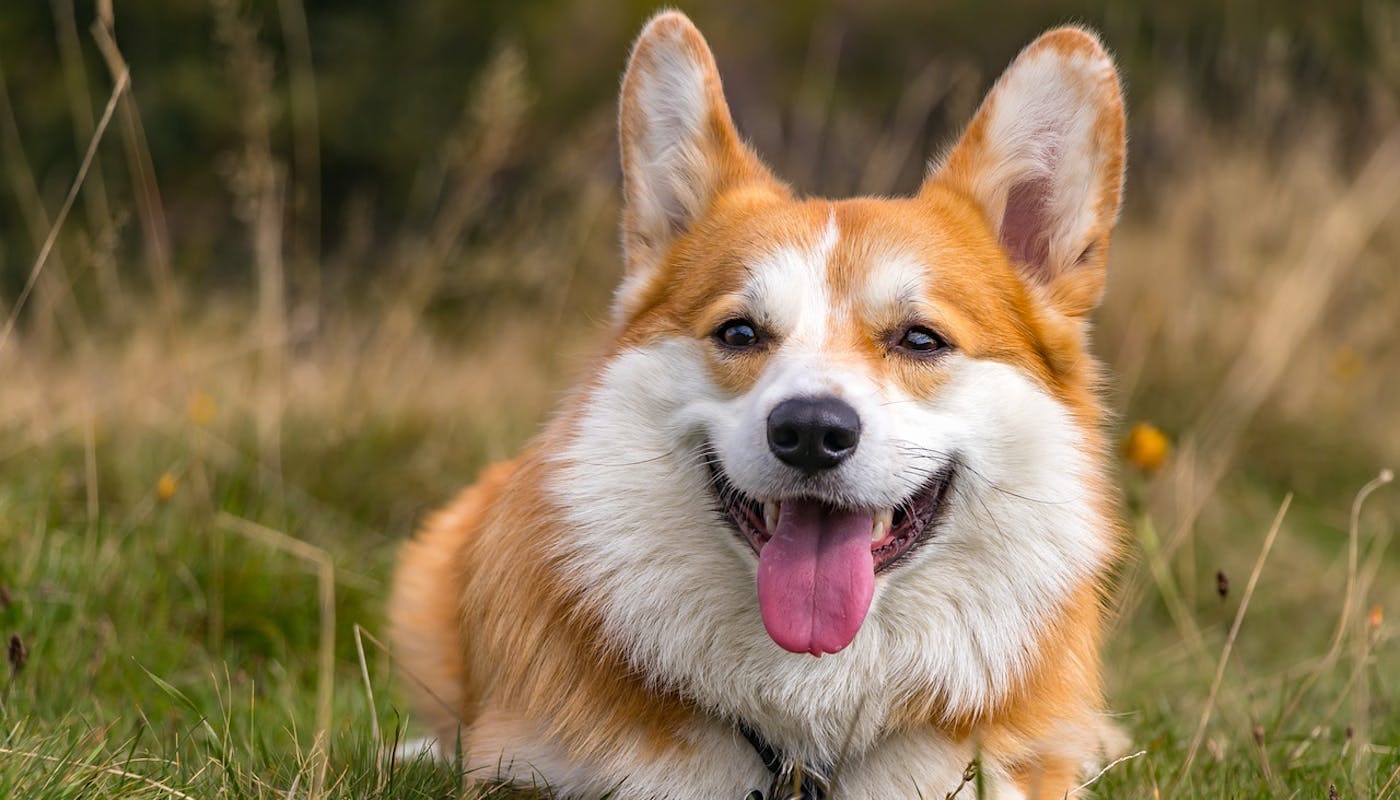Everything You Need to Know About Corgis
Preparing to welcome a little Corgi into your life? Here’s all you need to know about this loyal, determined breed.
Origins of the Corgi
“Corgi” means “dwarf dog” in Welsh, the country where the two distinct types of Corgi evolved. Their exact origins are debated; people say the Pembroke Corgi traveled to Wales with Flemish weavers, and the Cardigan Corgi had its roots in Scandinavia. For many years, the species interbred, and the distinction between the two types was finally registered with the Kennel Club in the early twentieth century.
Corgis were always herders at heart. They were called ‘heelers’ for their habit of nipping livestock at the heels – a persuasive method for smaller canines who wanted to assert authority. Corgis are short but agile and can be surprisingly speedy, so they were put to work herding sheep and cattle in rural Wales.
Like many working dogs, Corgis were also beloved for their companionable natures, which earned them a place at the farm hearth. In 1944, the King of England gave his daughter her own Corgi to celebrate her 18th birthday, she called this Corgi Susan. As the years passed, she would accumulate around 29 more! Queen Elizabeth II became the Corgi’s most famous fan, referring to the dogs as her “family”.
Were Corgis Adopted by Fairies?
Corgis are short, strong, and low to the ground – it’s obvious that they would be the perfect steeds for fairies or woodland nymphs. This charming myth was recorded by English poet and breeder Anne Biddlecombe.
In her 1946 poem ‘Corgi Fantasy’, she wrote:
“For their father told a legend
How the fairies kept some dwarf dogs.
Called them Corgis - Fairy heelers;
Made them work the fairy cattle,
Made them pull the fairy coaches,
Made them steeds for fairy riders,
Made them fairy children's playmates…”
According to folklore, carrying fairy warriors gave Corgis the remnants of a ‘saddle line’ – a pattern of raised fur at the top of their haunches.
Could the stories be true? Older history books have described fairies riding on miniature horses or small greyhounds, but sadly there’s not much literature to support the provenance of Corgis as fairy steeds. But lots of fans hold a different opinion. In the 1970s, artist Tasha Tudorhttps://www.tashatudorandfamily.com/tasha-tudor/the-woman – who adored Corgis and produced the Corgiville series of illustrated books – wrote, “I believe they are enchanted. You only need to see them by moonlight to realize this”.
Corgi Character
As a breed, the Corgi’s popularity has gone up and down in the last decade. In 2013 it was one of the ‘vulnerable breeds’ on the British Kennel Club’s watch-list – even though Queen Elizabeth II gave Corgis a steady stream of great PR. But, Corgi fans, don’t worry – Corgis are now comfortably placed in the top 20 in the UK as well as the US. How have Corgis charmed their way into our hearts?
They’re extremely loyal and affectionate, endearing themselves as domestic companions after working hours. Though they’re small, their character is mighty: Corgis have a commanding bark which makes them excellent watch-dogs. Bred to herd cattle – most of which would be five times their size – the Corgi has a bold and fearless spirit, with impressive determination!
Getting a Corgi? Practical Essentials to Consider
The Corgi owner often becomes besotted. This charming breed is loyal, lively, and affectionate – what do they need in return?
- Shedding: Yep. That thick, luxurious coat is double-layered, with an underlayer of warm fur. It’s designed that way for quick drying in bad weather. But it also means that your Corgi will perform a major shed around twice a year, so get the vacuum ready. Regular brushing is advised, but Corgis don’t need to have their fur trimmed (except sometimes between their toe-beans).
- Exercise: They may be short, but Corgis love to stretch their legs. They thrive on socialization and are often obsessed with playing ball (especially the Cardigan Corgi). They’ll need walks of around 1 hour every day.
- Training: Smart and athletic, Corgis are amenable to training. You might find that yours will enjoy a canine sport like Agility.
- Size: Adult Corgis weigh 25-38lb and measure 10-13” (ground to shoulders). The Cardigan Corgi tends to be larger. Both breeds are stocky and can be prone to hip dysplasia and spinal problems, particularly if they become overweight.
- Life Expectancy: The Corgi has a reasonably long life expectancy of 12-15 years.
Further Reading
We’ve got plenty more Corginspiration here on the blog. Learn more about different types of herding breeds/learn/dog-training/what-are-herding-dogs-dog-groups-explained. Have you ever heard of a Horgi? Check out some of the unusual Corgi mixes./learn/dog-lifestyle/cute-corgi-mixes Queen Elizabeth wasn’t the only famous woman who adored dogs – read about the breeds beloved by Elizabeth Taylor and Audrey Hepburn./learn/dog-lifestyle/6-powerful-women-and-their-dogs-throughout-history And, if you’re a fan of lists…. the Corgi made it onto our list of the Top Ten Dogs for Country Living/learn/dog-lifestyle/top-10-dog-breeds-for-country-living as well as The Easiest Dogs to Train!/learn/dog-training/the-easiest-dog-breeds-to-train
